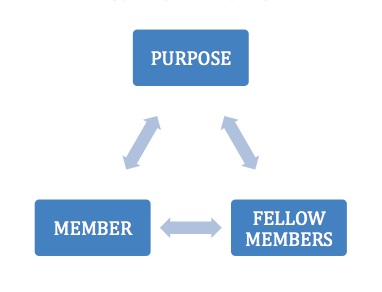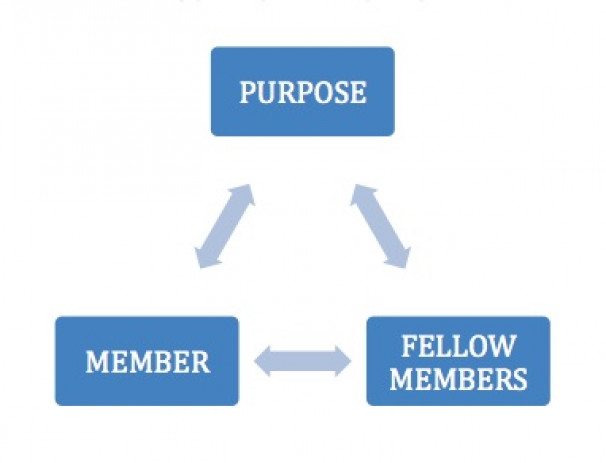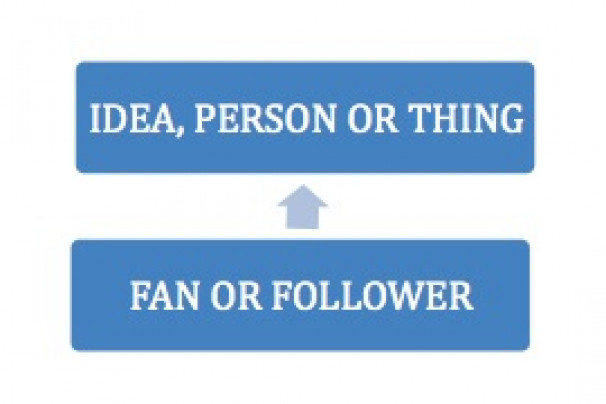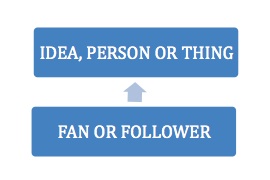This is a guest post from Douglas Atkin, CEO at The Glue Project and author of “The Culting of Brands.”
Fan, follower, or community member?
In the past, I’ve interviewed people about whether they are enabling real community. Most of them have been in the commercial arena. Many of them want to create communities around their brands to create more commitment.
There are really a few simple questions that they can ask themselves to clarify whether they are creating true community or not. Why should they bother to clarify this? Because there seems (to me) to be a bit of confusion about whether they’re creating fans, followers or community. Being a fan or follower is not the same as being a member. Membership of a community delivers a whole different degree of commitment (if done right).
It’s about the number of bonds.
It’s all about the number bonds you have. With fandom, there’s essentially a simple bond between the fan and the thing or person they’re a fan of. Or between the follower and the followed. Like fans or followers, members also have a bond to the purpose or values of a community. But critically, they also have a bond with fellow members of the community who also buy-into the purpose or values of the group. They have a relationship, a commitment and sense of responsibility to the other members. They are their friends, colleagues, fellow fighters, or just Bill and Jane who you look forward to seeing again at the next meeting.
This triangulated relationship is much harder to break than a two-way commitment. To leave would not only mean saying goodbye to the object of your commitment. It would also mean saying goodbye to your friends or even your brotherhood who share your commitment.
FAN OR FOLLOWER BOND
COMMUNITY BOND

So here’s a list of questions you should ask if you want a community vs. simply a fan base or followers. If you say yes to any of these things, you’re likely to enjoy the greater level of stickiness that a true community endows.
Community Checklist:
- Does it satisfy a real need? Do its members learn more, have more fun, get more done or get support?
- Does is have a clearly articulated purpose?
- Is it clear about who belongs and who doesn’t?
- Is there interaction between members?
- Are there enduring relationships formed between members that go beyond the original reason for connecting?
- Do they contribute, do they participate, do they work together to achieve the common purpose? (Being an audience is not a community.)
- Do they feel responsibility for each other and the community at large?
- Are there roles, responsibilities, and jobs performed by the membership?
- Is it self-policing? Do people censure or eject unruly or unreasonable members?
- Are there guidelines, rules, or norms of behavior?
To be really sure that you’ve enabled a real community ask the following questions of your members:
- Do they identify with the community? Does it reflect, in part, who they are as an individual?
- Do they have a sense of belonging?
- Can they be who they really are without fearing rejection?
- Do they have a sense of confidence, safety, even protection?
- Do they feel part of something bigger than themselves?
- Do they have a sense of purpose and meaning?
About Douglas Atkin
Douglas believes that community is the engine of loyalty -- to companies, brands, religions, causes, sports teams, whatever -- and that social glue is generally a good thing. He works with organizations to create to create stronger glue through better community platforms and programs. He does this through his venture: The Glue Project.
- Web |
- More Posts(12)





